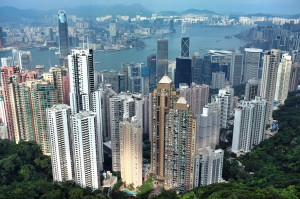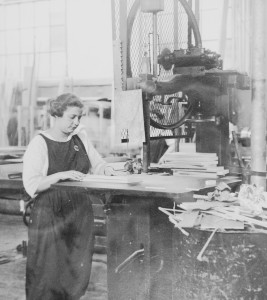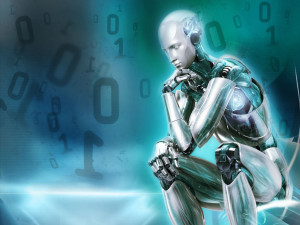China’s Pearl River Delta (PDR), the largest urban area in the world in both size and population, has been called the “factory to the world.” (Link to an economic profile here). It is a megapolis linking nine major cities into one huge economic region. In 2013 it accounted for nearly 10% of China’s entire GDP, and employed […]
AAAI’s Twenty-Ninth Conference on Artificial Intelligence
The Association for the Advancement of Artificial Intelligence held its twenty-ninth conference in January 2015 in Austin, Texas. Sponsors of this event included Microsoft, Google, IBM, Yahoo, Baidu, and Infosys, among others. The purpose of the conference was to “promote research in artificial intelligence and scientific exchange among AI researchers, practitioners, scientists, and engineers […]
Machine Shop Economics: Part 1
I’ve worked in machine shops for most of my life so it’s natural that I would think of a machine shop as a simple model for understanding the inner workings of a capitalist economy. This model also lends itself well to an exposition of the role of technology in transforming our relations of production, and gives the lie […]
Pew Research Center Report: AI, Robotics, And The Future of Jobs
What follows are the key insights from the Pew Research Center’s report “AI, Robotics, and the Future of Jobs.” The Pew Research Center created this shareable (twitter) list of the report’s highlights. It provides a great assessment of what nearly two thousand experts working in these fields are thinking. The horizon in question is the […]
Robot Economics Part 6: Extended Robot Reproduction
content pending
Robot Economics Part 5: Extended Reproduction
content pending
Robot Economics Part 4: Robot Reproduction
Imagine two companies in fierce competition with each other. Both manufacture the same commodity and this commodity is in high demand. The first company retains an entirely human workforce. The second uses automation as extensively as possible. They have robots to load and unload the machines, transport the parts, inspect, assemble, and pack and ship. They […]
Robot Economics Part 3: Simple Reproduction
Now that we are familiar with the basic formula of a capitalist enterprise, c+v+s=w, we can begin to explore how this relates to the economy as a whole. Marx’s reproduction schemes, models of the economy moving through an economic cycle, derive from Quesnay’s tableau économique, and are subjected to a rigorous mathematical analysis in Michio […]
Robot Economics Part 2: The Basic Equations
What follows is a crash course for those unfamiliar with Marx’s economic formulas. Those of you already familiar with this nomenclature may prefer to skip over to the page explaining simple reproduction schemes here. For any capitalist enterprise the following formula applies: The Constant Capital (c) + the Variable Capital (v) + the Surplus Value (s) = […]
Robot Economics Part 1: Tugan-Baranovsky
Can capitalism survive without workers? This was the question posed by Russian economist Mikhail Tugan-Baranovsky (1865-1919), best known for his history of economic crises in England, and for his influence on the development of modern business-cycle theory. His efforts to prove that underconsumption could never lead to an economic crisis led him to some startling conclusions. Writing in […]


